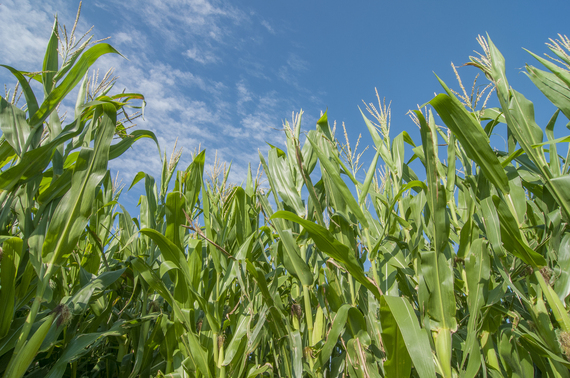Mark R. Tercek is the president and CEO of the Nature Conservancy and author of Nature's Fortune. Follow Mark on Twitter @MarkTercek.
Global food security is a hot topic here at the World Economic Forum (WEF). Will we hit on an easy solution to this enormous challenge in five days in Davos? Of course not.
But where else will you find all the big players -- government leaders, representatives of community groups, farmers, scientists, the heads of major food/beverage/commodity companies, along with folks like me from the NGO community -- together in the same place?
That's one reason I've been pleased to participate in meetings here on transforming global food systems.
We all brought our best ideas to the table to advance progress on ending hunger, achieving food and nutrition security and promoting sustainable agriculture. I was encouraged by everyone's contributions.
Here's one idea I enthusiastically pitched to the group: restoring soil health.
It may not be the most glamorous idea batted around in Davos. But it has the potential to be revolutionary.
The idea is simple: healthy soils produce higher yields. Yet most agricultural soils have lost an estimated 50 percent to 70 percent of their original organic carbon levels. These soils are significantly less productive.
Soil management has typically focused on quantity -- reducing soil loss from erosion. However, shifting this focus to soil quality -- increasing carbon storage and organic matter levels -- could significantly boost both agricultural and environmental outcomes.
For example, healthy soils reduce nutrient runoff into waterways. They hold water more effectively, requiring less irrigation and providing more water for plants during droughts or dry spells. They cost effectively sequester carbon dioxide at a significant scale. And they allow for increased productivity on existing agricultural land, reducing the conversion of natural habitat for agriculture.
What's more, improving soil health can work for smallholder farming as well as large-scale, industrial agriculture. There are still big gaps in the science, but we know that heritage farming practices as well as new, innovative techniques can both result in healthier soils. These practices include reducing tillage, decreasing traffic on soil to avoid compaction, using cover crops to increase microbial activity and improving grazing practices to ensure optimal plant growth and diversity.
The strategy sounds like a no-brainer, right? Big environmental and economic benefits. The ability to scale across different agricultural systems. Relatively simple-to-implement changes in soil management practices.
Yet the idea is currently on the sidelines of the global agriculture agenda. It needs to be front and center.
So what's next? As a first step, my organization, the Nature Conservancy, is excited to be part of the Soil Health Partnership, a new alliance that aims to identify, test and measure management practices that improve soil health and benefit farmers' operations.
Looking ahead, we are committed to further increasing science capacity in this area and building new business models that incentivize farmers for keeping more carbon in their soil.
While global agriculture has made enormous progress in everything from seed technology to equipment design, we haven't yet seen a focused effort to scale up innovative soil management strategies.
Now is the time to prioritize improving global soil health. It may be our best hope for producing more food for a world of 9 billion people without destroying the natural systems that sustain us all.
Image: Corn growing in Gothenburg, Nebraska. © Chris Helzer/TNC

